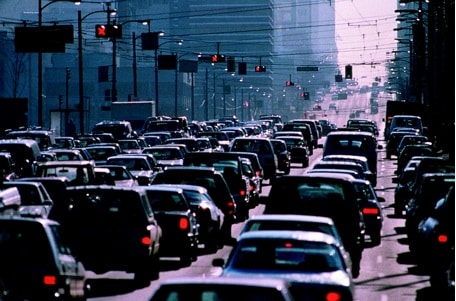 The race for faster inner city travel
The race for faster inner city travel
It’s beyond debate that speeding can create a dangerous situation for yourself and for those around you. Sticking to the maximum speeds on each road en route to your destination is not only efficient but also generally the safest and most acceptable option.
Whilst speeding cannot be condoned or encouraged in any sense, driving below speed limits can also be a serious risk to safety and can cause obvious problems within inner city areas. From simple issues like arriving late to the more complicated possibilities of causing traffic problems or even potentially an accident.
This month a new paper has been written and published by Corrado Lattanzio, Amelio Maurizi and Benedetto Piccoli on subject of using maths to analyse traffic jams and grid lock situations and using this analysis to cope with and solve these issues. Using a mathematical model based on a moving bottle neck the creators of this article and indeed the men behind the study have broken new ground in a previously unsuccessful area of research.
Changing outdated maths
Past attempts into the same area of research and theory have been held back due to the incorrect nature of the model used. For example most past attempts into such research did not examine the possibility of a single individual affecting the entire flow of traffic. This is due to old mathematical models which used a partially differential equation for the flow of traffic and at the same time a standard differential equation for determining the position of a singular vehicle. This meant that both equations could be solved separately and as a result did not take into account the effect of an individual on the group.
The new research uses a fully coupled model which takes into account the position of an individual in relation to the car density on the road. The dynamics of this new moving bottle neck model which are caused by a theoretical slow moving vehicle on the street can now be used to look at the flow of traffic and any disruptions which are caused.
Solving the Equation
Mathematically this problem can now be solved using a method based around “fractional steps,” although it might be a while before these types of models and equations can be put to good use, steps towards a clearer faster moving inner city are finally under way.
Despite these positive steps towards solving the problems of traffic jams and grid locks within inner cities, solving such issues cannot be completely put down to mathematical calculation and research. As the models now suggest the actions of an individual can affect the movement and density of an entire group of drivers. Taking things easy is all well and good but when driving below the speed limit could potentially be responsible for an entire street, later grinding to a halt staying alert and sticking to speed limits both seem like worthwhile and relatively easy things to accomplish.
Written by blogger and author Steph Staszko on behalf of the folks at Just Motor Law; specialist driving offence solicitors with experienced and professional knowledge of the legalities surrounding motoring laws.
















Leave a comment